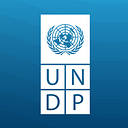Crowdfunding: a creative alternative to loans and credits
As the second module of the UN Crowdfunding Academy has been completed in Kyiv, we’ve collected the experts’ recommendations and practical cases that might inspire creative people to launch a startup.
During the first module of the Crowdfunding Academy, launched in late March in Sviatohirsk, Donetsk Oblast, the participants learnt about the operation of the crowdfunding platforms and the trends at the Ukrainian market. The second module was focused on communication, public relations, SMM, and design.
“Crowdfunding is a transparent and innovative tool for raising funds and securing support for business ideas from the general public.”
1. Social responsibility is on trend
“When planning a campaign, you should bear in mind that Ukrainian crowdfunding has a social and cultural focus,” said Denys Bortnikov, one of the Academy’s trainers and UNDP crowdfunding and alternative financing consultant. “This is closely linked to transformations happening in the country right now. Educational, environmental, media and cultural projects prove to be popular at Ukrainian crowdfunding platforms.”
The expert says that interest in social enterprises is on the rise in Ukraine.
In the first place, crowdfunding is about people: backers want to know what benefits your business initiative brings to them or society. It’s also a product test to see if there is an interest in your product among potential clients or partners.
“When planning a crowdfunding campaign, you should think in advance about communications for three circles of backers,” Bortnikov explains. “The first circle includes your 10–20 friends, the second circle includes opinion leaders, and the third one is online media.”
2. Tell your story
For a successful campaign, Academy experts recommend the storytelling approach. Your crowdfunding application should not only detail the idea behind your product or service, but also tell its story. It is better to start by telling people about yourself rather than about your business. Tell them how you came upon this idea, what issues you were facing, and how you managed to solve them.
Olena Khmara from Pokrovsk decided to launch crowdfunding campaign to raise funds for her Super Mother project. Her idea is to organise a series of educational events (lectures and workshops) to foster the professional and creative development of future mothers and women on maternity leave.
“My project gives an opportunity to gain new knowledge, gives inspiration and motivation,” Olena says. “From my own experience, I know that after having a baby women often start feeling disoriented, their aspirations and interests being no longer a priority.”
“Thus, my project is about combining motherhood with a career and self-development.”
Another creative idea comes from Mariupol. Petro Tesnovskyi, together with a Historical Reconstruction Club “Druzhyna Pryazovia” wants to raise funds for a mobile amusement called “Kochovysсhe”, or “the encampment of nomads.” The encampment is to be designed in a Medieval style, and could become a venue for safe sword fighting using sports swords, a shooting ground, and archery master classes as entertainment. The authors of the project also plan to arrange an area for taking pictures, and organize educational lectures on history and workshops for the manufacture of medieval household items.
3. Invest in social media marketing
Academy participants also visited the offices of Ukrainian startups that have raised hundreds of thousands dollars via Kickstarter: Petcube, a startup that designs and develops hardware and software products for pets; and Ugears, a company that creates 3D mechanical puzzles.
According to the Ugears’ team, when launching a campaign on an international platform, you should invest at least 15–30% of the desired amount in media coverage, including in themed publications and in promotion on social networks.
However, if you have an innovative product, there is a good chance that the media will take up your project naturally.
“During each of our campaigns, several dedicated publications wrote about us of their own accord,” said Hennadiy Shestak, Ugears’ director and co-owner. “Any publication is constantly looking for quality and relevant content for its readers, so an interesting and fresh project is usually not overlooked by the media.”
Ugears’ marketing director, Oleksandr Kravchuk, advises not to economize on videos and high-quality texts, and also have room for improvisation, as it adds zest to the campaign.
4. Ask successful people for advice
“Crowdfunding is a world marketing championship and a great opportunity to find buyers and business partners from around the world,” Kravchuk says. “It’s better to plan each step in advance. If you plan to run a campaign on an international platform, it’s crucial to have the English version of your project edited by a native speaker.”
Petcube co-founder Andriy Klen advised people not to be ashamed of asking for advice, “In the US it’s absolutely OK to invite colleagues you don’t know to exchange experiences over a cup of coffee. It’s part of their culture”.
“Ask successful people from your line of business — those who have already achieved what you are only planning to do — for advice, write to them on social media and invite them for a cup of coffee.”
The next stage in the preparation of crowdfunding applications will be to film a video with directors from the Molodiya Festival. Crowdfunding Academy participants will also be supported by experts when they prepare their applications on crowdfunding platforms and in running promotional campaigns.
This initiative is being implemented within the United Nations’ Recovery and Peacebuilding Programme, with the support of the European Union and in partnership with the CookEd Agency. The project’s media partner is Marketing Media Review.
Text: Oleg Chankotadze. Photo credit: Stanislav Ratynskyi, Artem Getman / UNDP Ukraine
